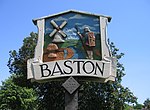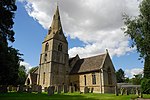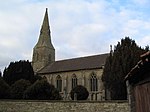King Street (Roman road)
Archaeological sites in CambridgeshireArchaeological sites in LincolnshireRoads in LincolnshireRoman roads in EnglandUse British English from July 2017

King Street is the name of a modern road on the line of a Roman road. It runs on a straight course in eastern England, between the City of Peterborough and South Kesteven in Lincolnshire. This English name has long been applied to the part which is still in use and which lies between Ailsworth Heath, in the south and Kate's Bridge, in the north. The old road continued to Bourne thence north-westwards to join Ermine Street south of Ancaster. This part of Ermine Street is called High Dike. In the south, King Street joined Ermine Street close to the River Nene, north of Durobrivae. The whole is I. D. Margary's Roman road number 26. (Margary pp. 232–234)
Excerpt from the Wikipedia article King Street (Roman road) (License: CC BY-SA 3.0, Authors, Images).King Street (Roman road)
King Street, South Kesteven Langtoft
Geographical coordinates (GPS) Address Nearby Places Show on map
Geographical coordinates (GPS)
| Latitude | Longitude |
|---|---|
| N 52.6917 ° | E -0.36503 ° |
Address
King Street
King Street
PE6 9NG South Kesteven, Langtoft
England, United Kingdom
Open on Google Maps










